

Video teaser :
The return to life of vanished brands is a source of fantasy for car lovers. They have sometimes been disappointed, as when PSA bought Chrysler Europe at the end of the 1970s and transformed the Simca brand into Talbot. A monumental flop. In the world of the more prestigious brands, the rebirth of Bugatti in 1991 through Romano Artioli and the EB110, and then by the Volkswagen group in 1998 with the Piëch-Giugiaro duo, was crowned with success, since Bugatti is sustainable and assembles its models in France.
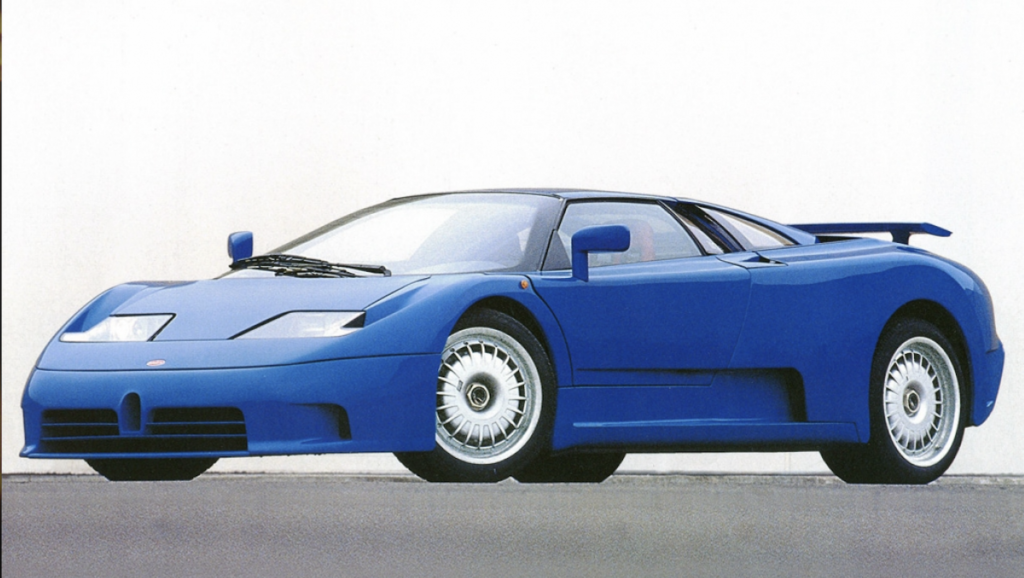
The latest model, the Tourbillon, is extraordinary. And so is its price: 3.8 million. We can also recall the rebirth of Maybach, which finally became a signature rather than a brand in its own right. Let’s also remember the Horch brand name that was attached to an Audi A8. And what about this latest manufacturer, which is today launching a new brand in China without calling it Horch, but more surprisingly… AUDI, in capital letters please.
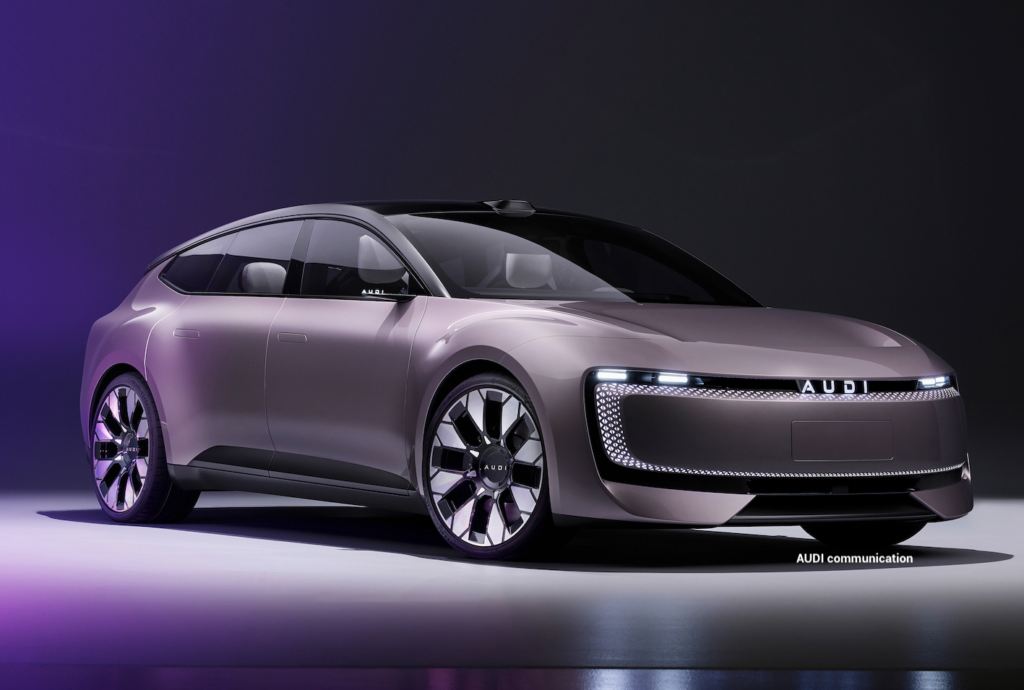
Amidst all this bric-a-brac, there was one sensational venture that aimed to revive one of France’s most emblematic car brands: Avions Voisin*. This undertaking was courageously led by some of the biggest names in the automotive industry, most of whom came from Renault: Patrick le Quément, Senior Vice President of Renault Industrial Design from 1988 to 2009, Christian Contzen, Director of Renault Sport from 1990 to 2002, with 11 F1 world championship titles under his belt, Fabrice Pouille, former Renault designer and now head of 10-6 Design, Alain Giraud, among others, former technical manager of the Renault satellite studios in Paris Bastille and Barcelona.
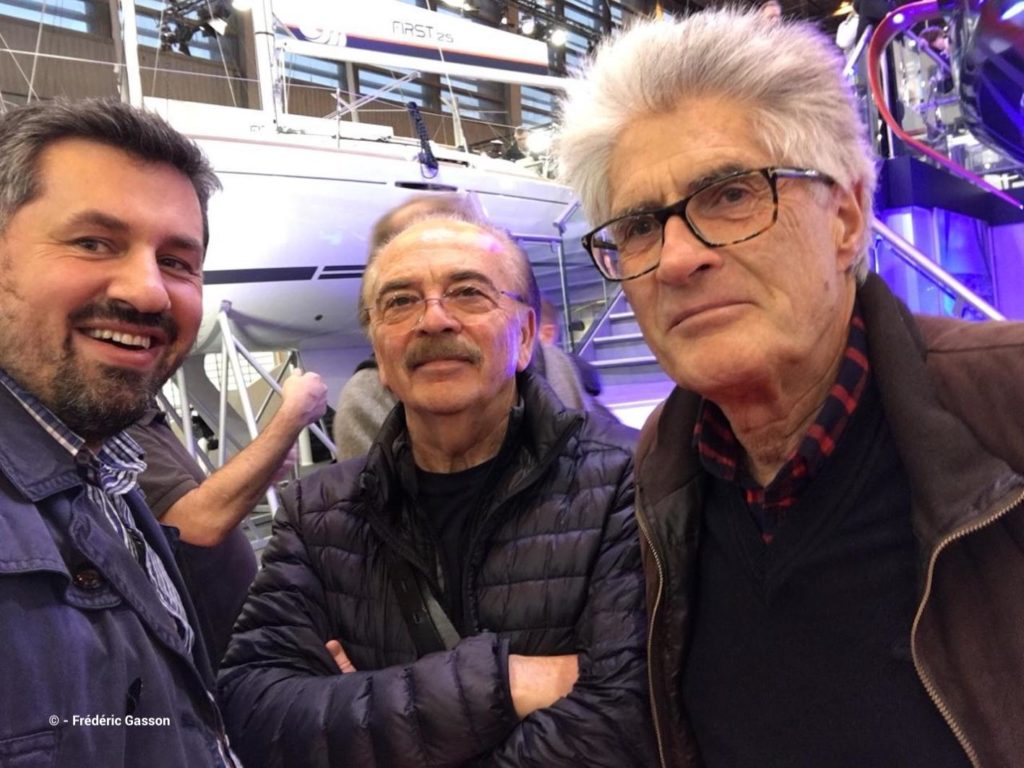
The team also includes Frédéric Gasson, a digitisation expert who spent four years working on Renault concept cars from 2003 to 2007, then spent five years in charge of digital modelling at Bugatti, and Christophe Chedal-Anglay, a product and yacht designer who co-created, together with Patrick le Quément, the Gunboat 68 below. This is a far cry from Louis Forton’s comic’s characters featured in ‘les pieds nickelés’! What we have here is a top-flight team. And thanks to them, we can exclusively tell you this fabulous story, which was beaten by a pandemic that we all know…
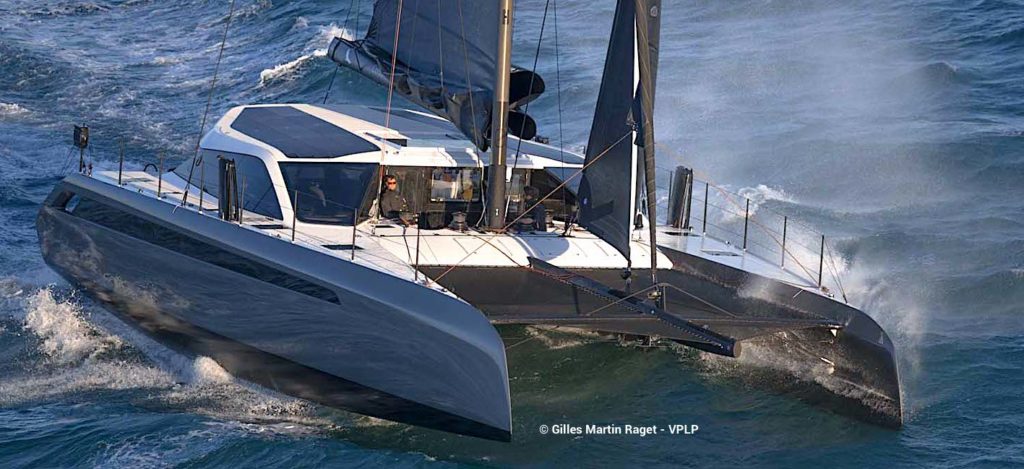
December 2019, Paris region
The first document for a fabulous and slightly mad project is written on 20 December 2019. It already mentions an approach to investors and explores the framework of this programme from the outset. He asked each member of the team to define Avions Voisin’s values in three or four words. The idea was to produce an extraordinary supercar, in the true sense of the word, under the name of Renaissance Avions Voisin. The document states that ‘you need to be a scholar to understand the Avions Voisin philosophy, because these were not ‘easy’ cars!‘
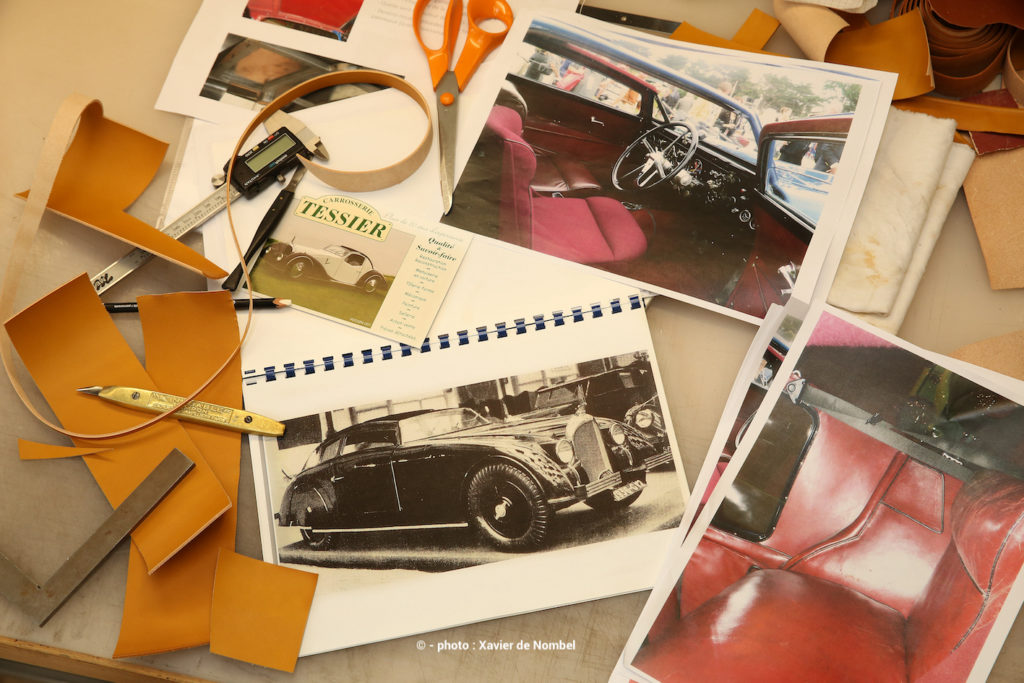
This first note looks at time and asks the fundamental question: ‘How would Gabriel Voisin have managed the 100 years of progress and social change since Avions Voisin ceased production?‘ The conclusion outlines the way forward: ‘by rediscovering the essence that has disappeared, by fighting for the Avions Voisin spirit, by preserving its specific features‘ and, above all, ‘by not forgetting the timelessness of Avions Voisin in terms of materials and new technologies.’ For the team, the programme must respect Gabriel Voisin’s ‘recipe’, which combined know-how, technology and… poetry! The note concludes with words taken from Gabriel Voisin’s archives, in which he wrote that ‘the lines of cars, that beautiful opportunity to throw smoke in the eyes, will have disappeared long ago, swept away once and for all by that irresistible imperative: function’. The team’s first appointment is at the Rétromobile show (below), on Thursday 6 February 2020.
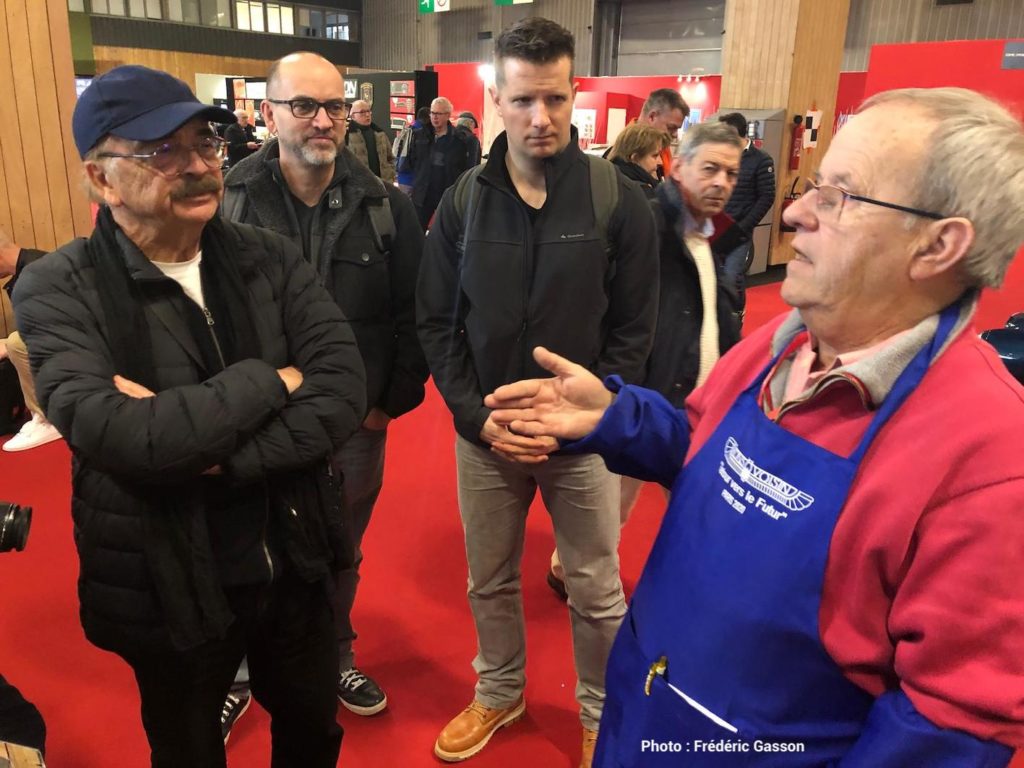
At the same time, in Wuhan, China
After a first case of an emerging infectious disease (the SARS-CoV-2 virus) reported on 17 November 2019 in the city of Wuhan, this city in Hubei province became THE major epidemic focus of what would soon be known as Covid 19. But China waited until 27 December to officially declare the first case of Covid 19, more than a month after it first appeared.
January 2020, in Paris
To describe the future Avions Voisin Renaissance, the words chosen with great care form an alphabetical jewellry box of what the car should be: ‘radical, emblematic, elegant, intelligent, audacious, distinctive, pioneering, iconic...’. Of these, Radical, Emblematic and Audacious were chosen. The team is following an immersion approach and wants to ‘walk in the footsteps of Gabriel Voisin.’ Alongside the key words, it does not hesitate to identify what is not Avions Voisin, such as ‘superficial’, ‘heavy’ or ‘retro style’. This shows that an Avions Voisin car is not formally an expression of aerodynamics, even if aerodynamics is a given!
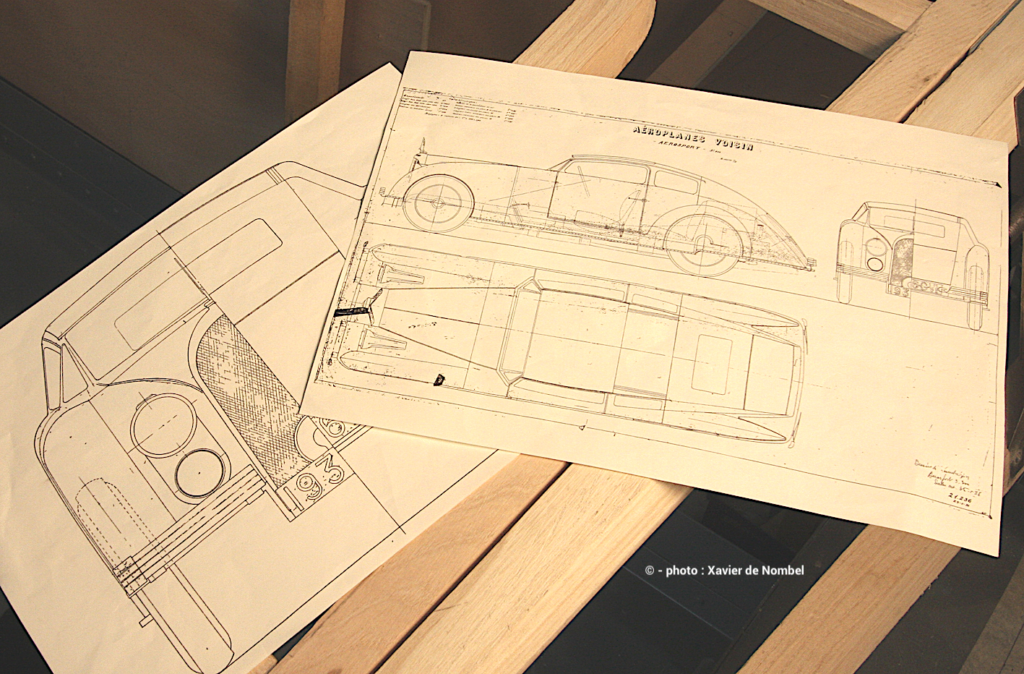
Similarly, the term ‘technological’ is seen as a means rather than a value. ‘A means that should allow us to be bold and radical ‘. The team is now thinking about the treatment of vision on board the Renaissance, in particular upper and peripheral vision. The Renaissance Avions Voisin would have a ‘luminous’ design. The word ‘intelligence’ was quickly brought to the fore, as Le Corbusier wrote that ‘good design is intelligence made visible’. Finally, the Avions Voisin Renaissance had to anticipate technological developments, particularly in terms of screens, batteries and so on. The note states that ‘it is essential that maintenance and repairability are integrated into the design from the outset, with a view to preserving the quality of the object throughout its life’. In addition, the durability of solutions and materials is an imperative.
9 January in Wuhan
On 9 January, the first death linked to the SARS-CoV-2 virus occurred in a 61-year-old patient in Wuhan. On 16 January, the Chinese authorities announced that another 69-year-old man, whose illness had been confirmed, had died the previous day in Wuhan. The news, like the virus, then crossed international borders…
February 2020 in France
This is a crucial month for the real launch of the programme. Investors must be made to understand that the team’s aim is not to revive a brand, but ‘to create a concept that lives up to the history of Avions Voisin’. Christian Contzen has already come up with two ideas for funding. The first came from the Emirates, which, says Alain Giraud, ‘are states that invest heavily in the sustainable sector.’
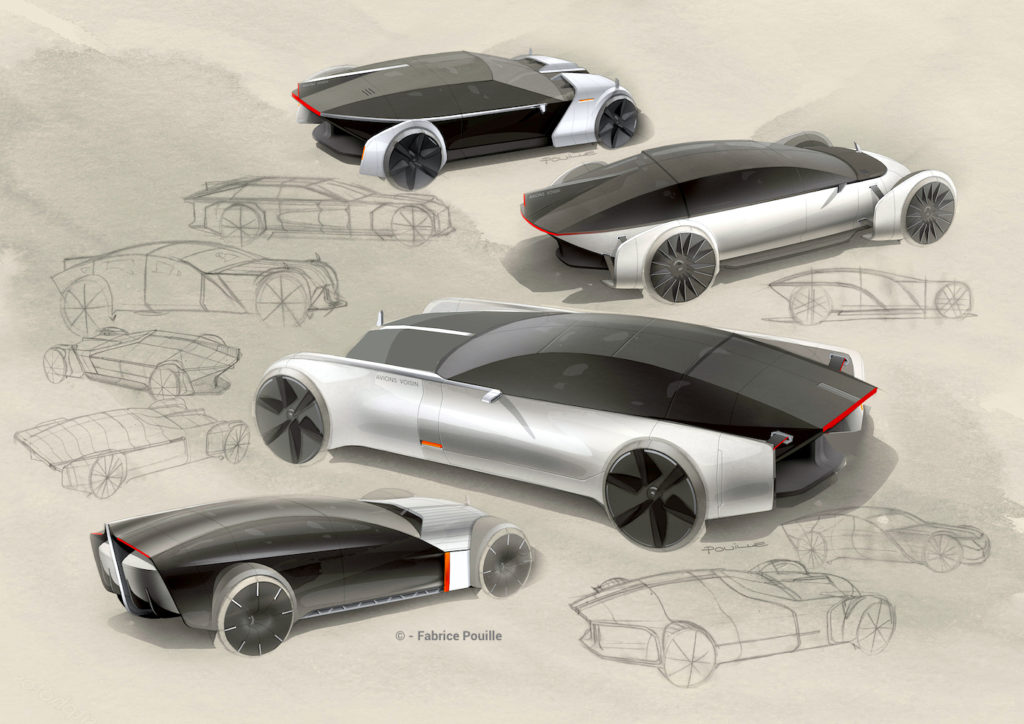
And that’s just as well, because the specifications for the Renaissance d’Avions Voisin focus precisely on this theme, in addition to being a true 4-seater, which is rare in the world of supercars. Only the Koenigsegg Gemera (2020) offers this architecture, while the four-seater Bugatti 16 C Galibier saloon (below) of 2010, on which Frédéric Gasson worked at length, was never followed up. The second avenue is even more serious.

Christian Contzen is due to travel to China with a document under his arm, published to make the Chinese dream, and to explain to them that the Avions Voisin Renaissance project can highlight the advantages of their new Premium Electric platform. A major Chinese group is the target, and it has learned a lot from the Germans, BMW in particular. Its ambition is to overtake them with this platform dressed up in SUV silhouettes. The advantage of the Avions Voisin project is therefore to take advantage of this technical underpinning to sublimate it with a flamboyant design. The document highlights the history of Avions Voisin, but also the French names that are likely to appeal to the Chinese: Hermès for very top-of-the-range upholstery, Faurecia for highly innovative seats, Plastic Omnium for possible hydrogen tanks, Eve System in Lyon for electrification and Segula for engineering.
February 8 in France
Borders don’t exist for the SARS-CoV-2 virus… Around ten cases of the virus have been reported in France. At the same time, the organisers of the Geneva Motor Show, scheduled for March 2020, are sending out the last accreditations for an event that is already shaping up to be grandiose
February 2020 in France
The project’s initial team, which included Yvon Cariou and Olivier Jansonie, had the ambition of approaching Peter Mullin to gain a foothold. But this approach was quickly abandoned, because Olivier Jansonie left to become head of the Peugeot-Sport racing team. The team was refocused around Christian Contzen, Patrick le Quément, Fabrice Pouille, Alain Giraud, Christophe Chedal-Anglay and Frédéric Gasson. This was also the month in which the logic was respected, with the setting up of a regular exchange with the French specialist in Avions Voisin: Philipp Moch, pictured below by Xavier de Nombel.

Christian Contzen, in an exchange with Patrick le Quément dated 15 February 2020, points out that ‘Philipp Moch is the spiritual son of Voisin, and his participation is essential!’ In addition, there is one owner of the Avions Voisin name who will have to be convinced: the Safran group. It’s clear that the project absolutely must showcase the many French – or European – companies and craftsmen if Safran is to be won over, even if the platform and engine come from China. However, the Chinese market is essential for Safran and, on a more human level, Christian Contzen knows the Safran boss well…
March 2020 in France
The Covid 19 epidemic suddenly becomes a pandemic. The number of cases in France was close to 10,000 in mid-March and exploded to 115,000 a month later. This marked the start of a period of confinement…
March 2020 in France
No matter, the Renaissance Avions Voisin team wants to leave no stone unturned in terms of the car package. Discussions are taking place via the internet and videoconferences. One of the notes exchanged explains that ‘it seems judicious not to confine ourselves to what we know, but rather to cross-fertilise our experiences and open up new avenues. For example, in terms of superstructure and openings, the prohibitions to which we are accustomed in mass production no longer necessarily apply. It seems possible to envisage solutions traditionally considered expensive or complicated, such as gullwing doors, the absence of a centre pillar or highly innovative seats.‘
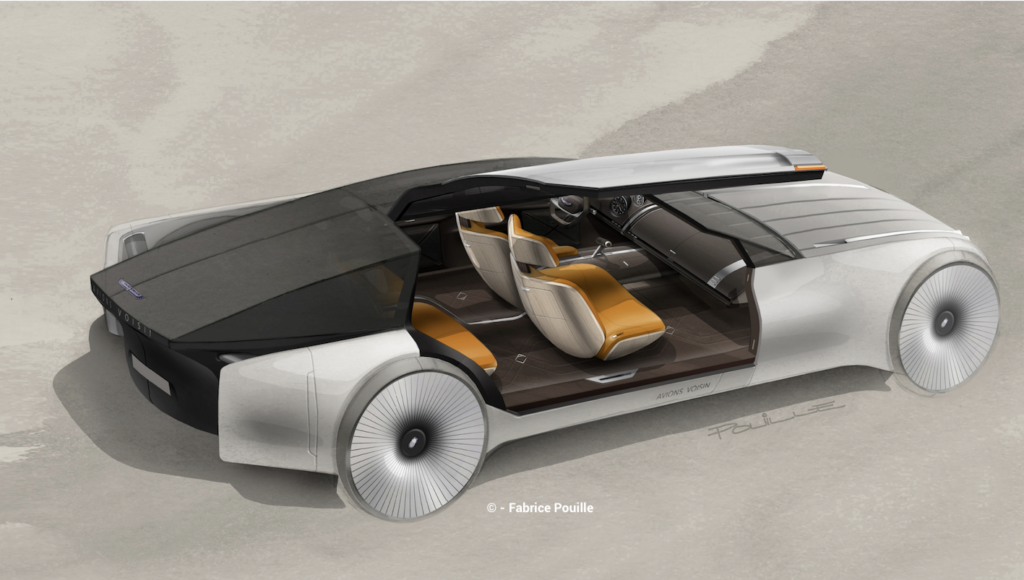
It was at this point that the Renaissance Avions Voisin took shape: it was to be a 4-seater limousine between 4.80 and 5.00 metres long. Opposite it, the specifications included the 1995 Initiale concept car (4.88 m), the 2008 Ondelios concept car (4.81 m), the Bentley EXP 100 GT (4.80 m) and the Lagonda E-SUV (5.00 m). From this first draft, we can see that there is no question of talking about a ‘chauffeur’, because the driver of the Renaissance Avions Voisin will be the owner…
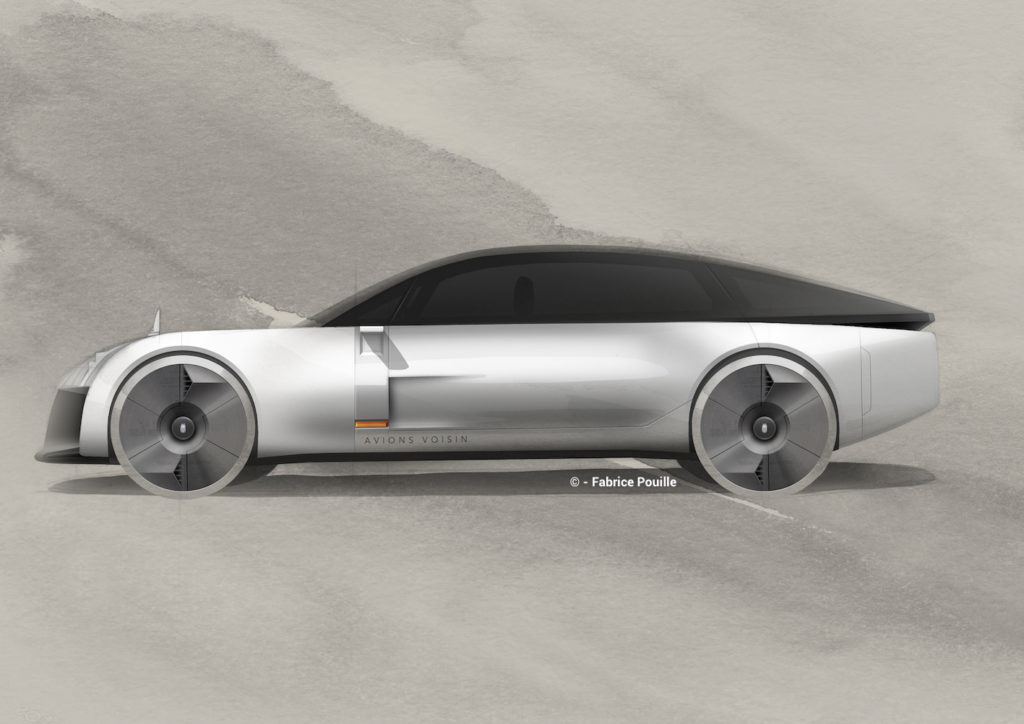
We extracted a note from the many exchanges within the team which explains that ‘personalisation is essential and must involve very early exchanges and mutual inspiration between the customer and the manufacturer. Customers must have the impression that they are defining their own product… ‘. The Renaissance Avions Voisin ‘production’ schedule is therefore taking shape: 16 weeks for orders and supplies, 8 weeks for assembly and 1 to 6 months for customisation! For production, the question arose as to the location: France or Europe? The name of Touring Superleggera was mentioned.
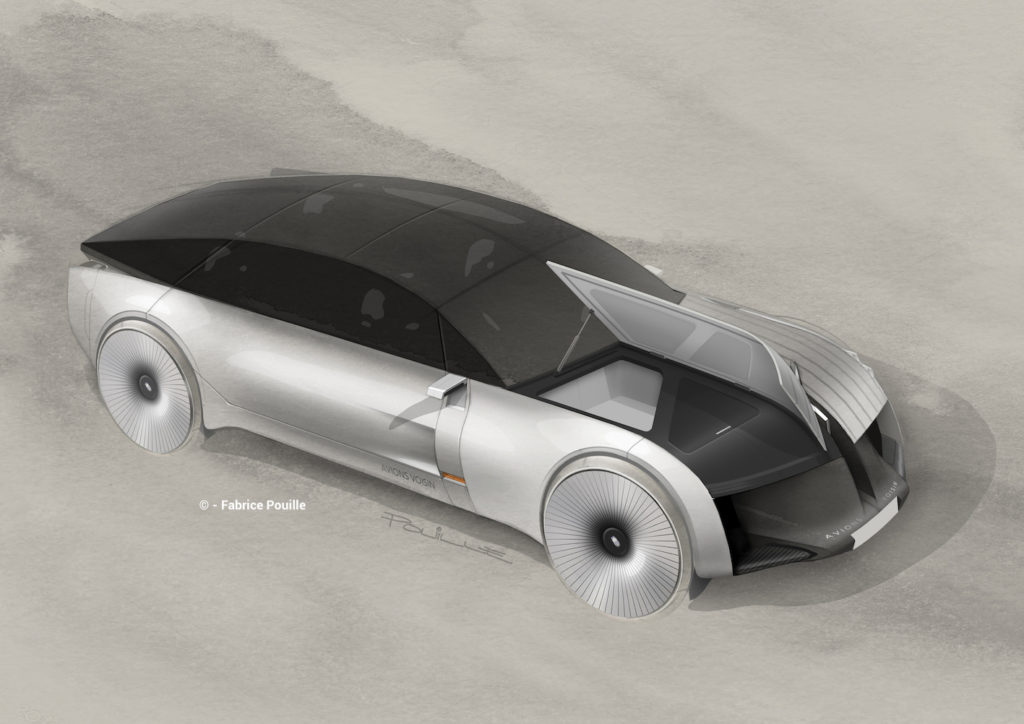
March 2020 in Geneva and Melbourne
The Geneva Motor Show is cancelled just as the stands are being set up. It was a shock. At DS Automobiles, the reaction was swift: the ASL concept car, which was locked in a truck on its way to Geneva, made a U-turn. Things were no better in Australia, where one of the McLaren F1 team’s mechanics tested positive for Covid 19: the F1 GP was also cancelled. The season will only start behind closed doors in the middle of the year…
March 2020 in France
Technically, the project is making progress, notably on the chassis design. A question was asked by Patrick le Quément who, since leaving Renault’s Industrial Design department, has been designing boats that have won numerous international prizes, including five European Boat of the Year awards. His new knowledge of the boating world has opened a whole new world of possibilities. He poses a strategic question for the design of the chassis of the Renaissance Avions Voisin: ‘Rather than turning to the great specialists in automotive carbon hulls, why not consider working with the world of high-level competition boating? Car carbon hulls are infinitely rigid bodies and, as such, are very likely to be extremely noisy. A superstructure made from carbon ribs should not generate so much resonance and achieving a very high level of acoustic performance should be less complex.‘

What seems to be fixed at this stage are the design processes: the superstructure is designed simultaneously by the design team and by structural calculations in terms of crash, body torsion, etc. ‘The carbon fibre members are then made individually and assembled using nodes produced by 3D metal printing. For final assembly, screwing is preferred to gluing’.
17 March 2020 in France
The unthinkable has happened: France is under lockdown from 17 March to 11 May 2020. Never will wildlife have enjoyed such tranquility, returning to its natural state while the streets of every town, village and suburb are deserted. The Champs Élysées in Paris are empty, and the image is striking. Unreal. And yet this is not a film… A second lockdown will take place from 30 October to 15 December 2020 and a final lockdown from 3 April to 3 May 2021…
April 2020 in France
Designer Fabrice Pouille took advantage of the lock-up to sketch out the Avions Voisin Renaissance. This designer has the enormous advantage of having trained as an engineer at the UTC in Compiègne. He presented the state of his research with three projects based on the reference plan provided by Alain Giraud. Fabrice admits that ‘I was a bit intimidated because the subject was so huge! So, I immersed myself in the history of the Voisin brothers, and it was essential to submerged myself in the spirit of the times. Gabriel Voisin trained as an architect. I quickly felt at ease with the project!’
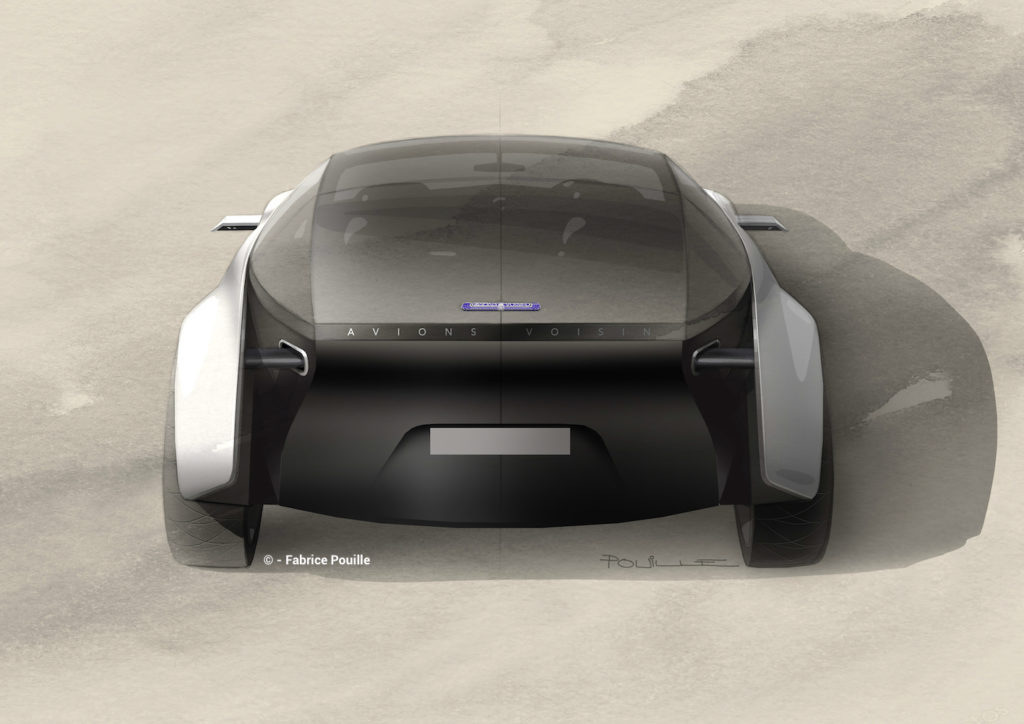
The programme is progressing despite the health constraints. The three pillars of its appeal are features, design and quality. Everything is referenced and calculated, from the vision of ¾ rear to the noise of a door, from the access and storage of the charging cable to the effort of each control on board. A note from April 2020 states that ‘containment is going rather well for us’ and the draft reference plan is in the hands of Alain Giraud with the insights of Patrick le Quément and the expertise of Christophe Chedal-Anglay.
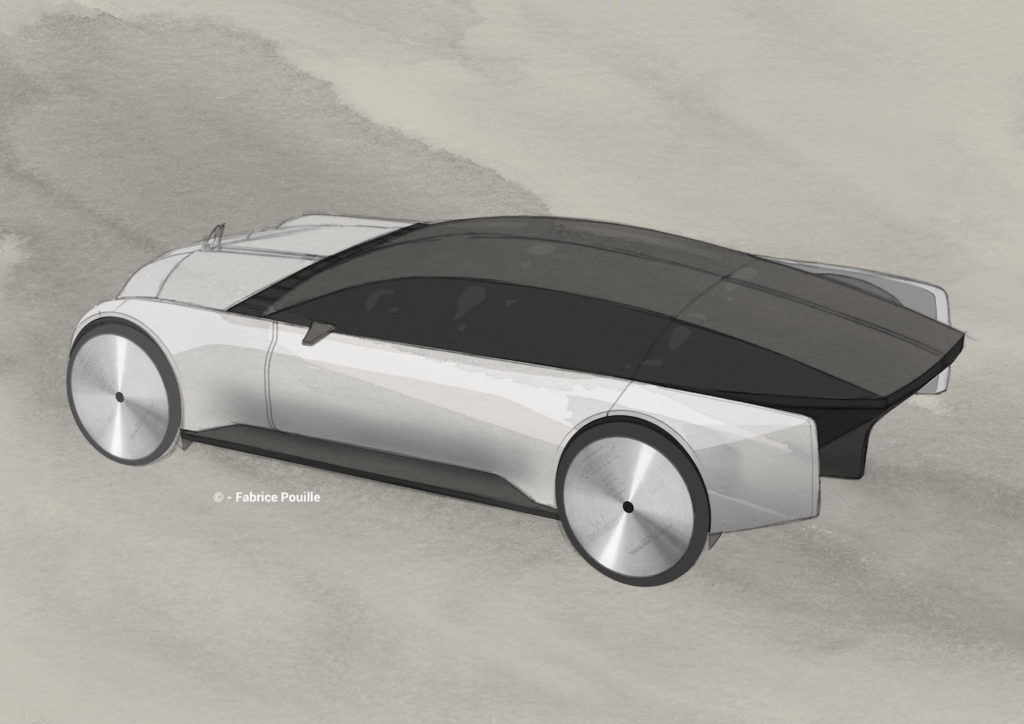
The drawings proposed by Fabrice Pouille correspond ‘to what we imagined for Avions Voisin, la Renaissance’, reads a note dated 9 April, even if ‘the front needs to be reworked’, which will be done shortly. The priority remains to offer exceptional habitability in row 2, while fine-tuning accessibility and comfort. To achieve this, the Renaissance Avions Voisin has been equipped with rear seats that swivel by around 10° to ‘highlight a certain freedom of movement.’
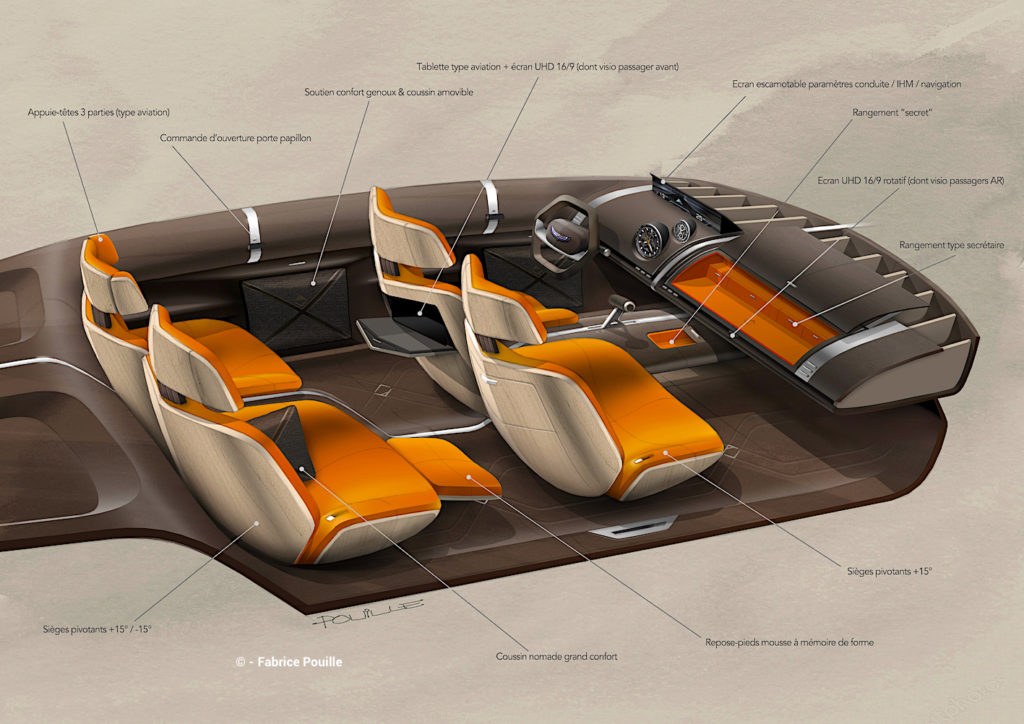
April 2020 in China
It is difficult to obtain verifiable information from China about deaths due to Covid-19. Journalists are basing themselves on the number of funeral urns sold in April: 45,000. A figure was then circulated: 640,000 Chinese were carriers of the virus. Unverifiable for the moment…
End of April 2020 in France
The small team is working on every detail. The programme was gigantic. In the notes, we read that ‘the project will have to offer surprises, create new values, imagine extraordinary features, particularly in terms of the lighting signature, and everywhere the technology is perfectly mastered’. As for its design, it became more accomplished, and the Renaissance Avions Voisin ‘displays a real interest that current cars, and supercars in particular, do not have. It’s a saloon, with beautiful lines. It is elegant and sumptuous. The sides are extremely pure, with subtle modelling…‘
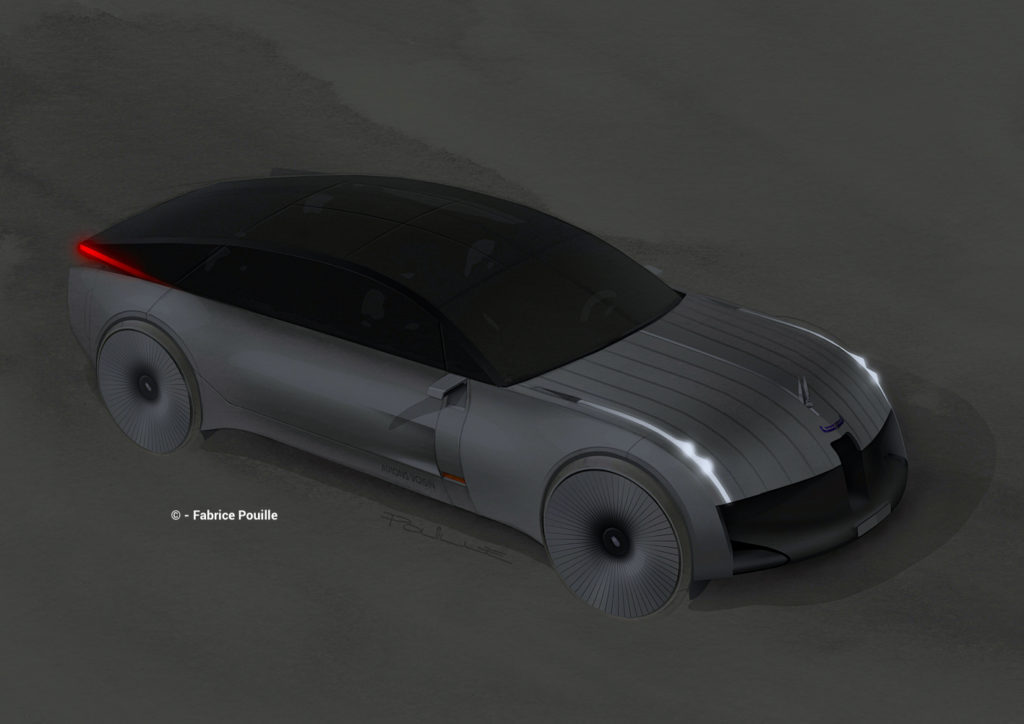
Patrick le Quément concludes that ‘the object is promising and the support of the whole team is strong… We’re all dreaming of seeing this car in 3D and visualising its interior. Should we display the Avions Voisin myth (highlighting the logos and the Cocotte)? Or should we preserve the mystery of an object that is essentially identifiable by connoisseurs and happy-fews?‘ The pandemic did not make the team’s task any easier. It will take a good year to finalise the project in terms of design, and we’re still waiting for funding.

May 2020 in France
Fabrice Pouille has made progress in all areas of the Renaissance Avions Voisin design. The interior will be proposed in 2020, with a habitability study in line with the specifications. The design of the wheel rims was discussed at length with the team. The car’s final dimensions were 5.14 m long, 1.95 m wide and 1.45 m high, all based on an exceptional wheelbase of 3.39 m. The advantage of flamboyant interior space in row 2 has been achieved.
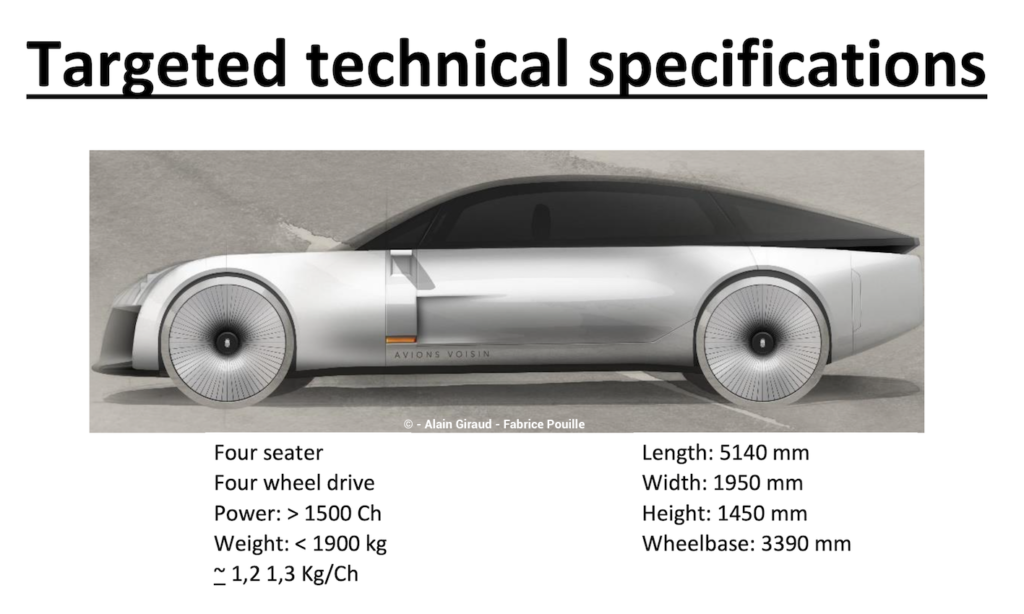
The Renaissance Avions Voisin has four-wheel drive and weighs in at under 2,000 kg. In June 2020, ‘the new front end presented by Fabrice was unanimously acclaimed. This front end is very much in the tradition of the ‘laboratory’ Voisin. It clearly shows that the vehicle is not combustion-powered.‘ All the details are out at this stage! The dimensions for opening the doors upwards have been calculated as accurately as possible, and a request has been made for a mid-travel stop. As for the boot, it can accommodate two golf bags without detracting from the royal roominess for four people.
May to October 2020 in France
The 131,000 recorded cases of carriers of the Covid-19 virus in France in May will, in just six months, explode to over 1,500,000 by November of the same year. The chances of an effective vaccine are there, and will soon pave the way for vaccination…
Early 2021 in France
Following a final meeting in November 2021, the project is ready to be shared with potential partners including Segula, Bosch, Hermès and Michelin. A sales price has already been calculated, taking account of the competition. The distribution service was also considered. At the time, Bugatti was distributed through 36 official dealerships around the world. Koenigsegg had around thirty.
The annual market for supercars amounted to several thousand units, sold at prices well more than $1m, with several hundred exceeding $2m (Bugatti, Ferrari, Lamborghini, Pagani, Koenigsegg, etc.). In this context, the Renaissance Avions Voisin would be produced at a starting price of €3 million, depending on the level of customisation. The figures are calculated over a five-year period, with 35 cars to be produced over that period.
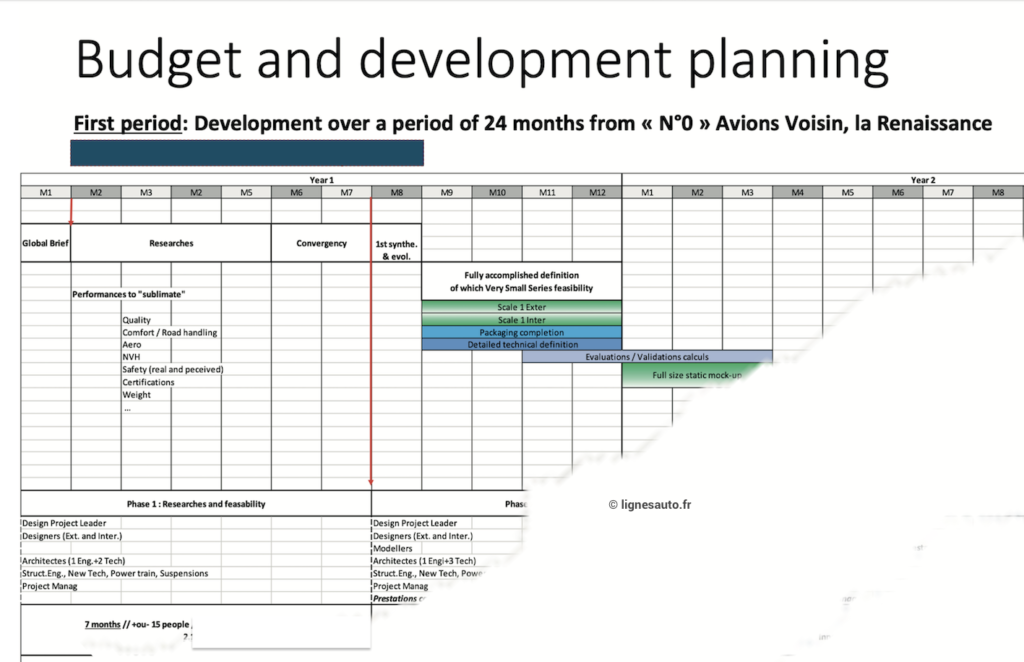
Production would increase from 3 to 10 per year, for a 5-year turnover more than €105m. The business plan obviously includes the prototype phase. The budget and planning provide for development over a period of 24 months, starting with the ‘N°0’, estimated at €15m. The second period, that of production, is also budgeted based on 35 units over 5 years. The cost price of each unit is around €1m. Each unit would take 2 months to build, and the Renaissance Avions Voisin should be able to be delivered within a standard timeframe of 5 to 6 months. Obviously, given the exclusivity of the product, ‘the cost and delivery time of any version that deviates significantly from the standard definition will be negotiated before production begins.’
December 2020 to January 2022 in France
On 27 December 2020, the Covid-19 vaccination campaign began in France. The campaign was successful, but it would be many months before the pandemic subsided. In April 2021, France recorded more than 5,600,000 cases of Covid, and the figure climbed to more than 10,300,000 by the beginning of 2022…
2022 in France
In the end, there will be no question of manufacturing. Trade with the two or three investors was killed off by the pandemic. The global recovery had its own priorities, and the Avions Voisin Renaissance project bore the brunt of these. On 5 May 2023, the World Health Organisation raised its highest alert level for the Covid-19 pandemic, three years after it first appeared.
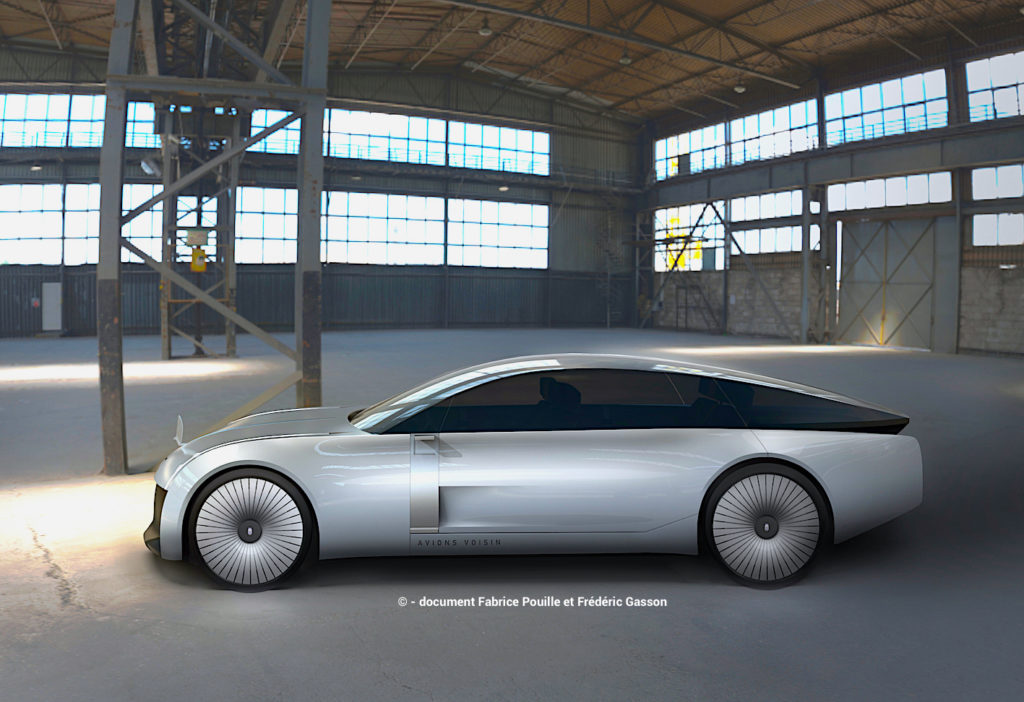
In France, the number of deaths exceeded 116,000, while the WHO estimates that there will be more than 6.9 million deaths due to the pandemic worldwide. Obviously, given the scale of the health crisis, putting the Avions Voisin revival programme on hold seemed a futile exercise. The project was stopped dead in its tracks. However, the energy and passion, the seriousness and professional caliber of the people involved, carried this programme through to the end with the hope of a production. We can only salute them. And we can only hope that one day Avions Voisin will be reborn with all its soul, just as this aborted project was so well perpetuated…
THE RENAISSANCE TEAM SPEAKS OUT
Verbatim
Patrick le Quément
‘You can recognise a Voisin first and foremost by its silhouette, which stands out from its contemporaries thanks to proportions that express the manufacturer’s relentless quest to meet these few criteria: the lowest possible centre of gravity, a constant quest for weight reduction combined with aerodynamic finesse. I really liked the bold colour scheme that Fabrice offered us with the Avions Voisin Renaissance in 2020, with a front end in a different colour that sits very naturally in a structured composition. That would have been my choice. I found the silhouette perfect. The rear view is really disruptive, it’s a real Avions Voisin! You open the gullwing doors and discover a colourful interior that reminds me of the wonderful C28 redone by the Hermès saddlers. The spirit of the interior appeals to me, with its seductive Eames-style seats that suggest comfort, protection and a restful welcome. Similarly, the idea of the door panels surrounded at the top by a structuring element and the suggestion of a softer lower section, in harmony with the touch of the human body, is perfect’.
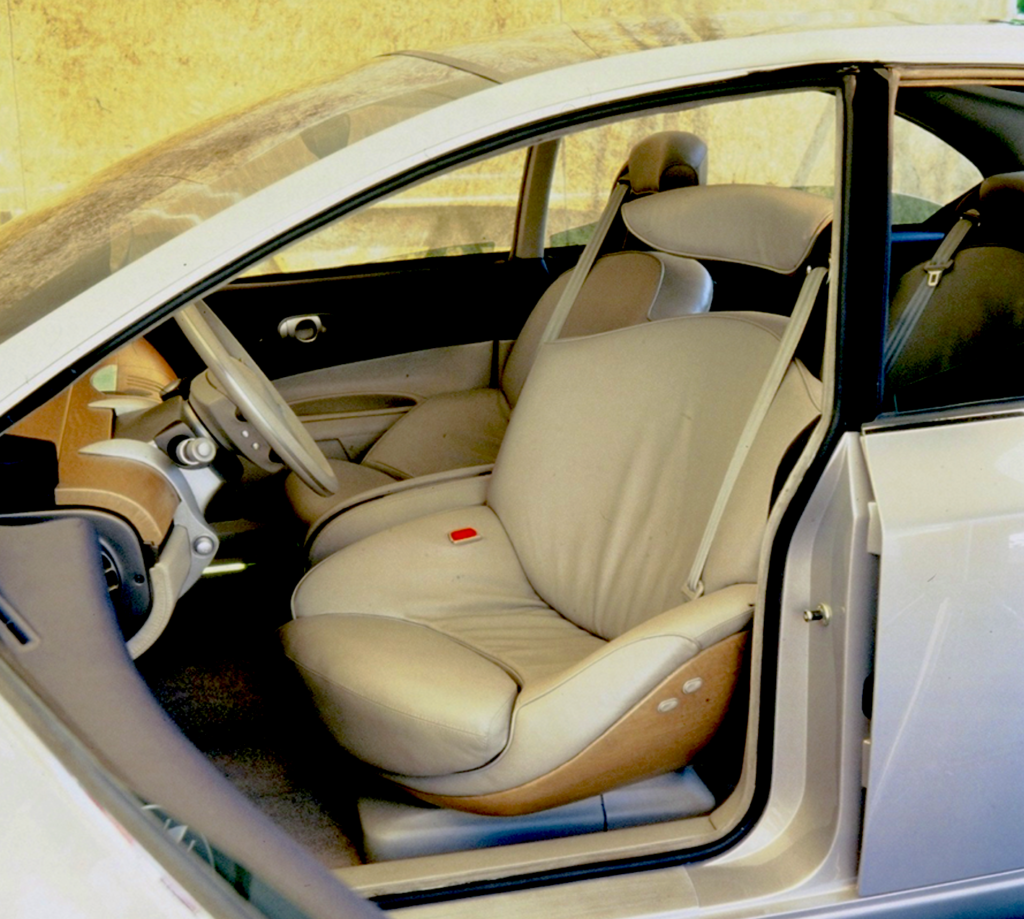
Verbatim
Fabrice Pouille
‘When I designed this limousine, I had a leitmotiv: I wanted to evoke the world of aviation, in one way or another. Because the history of Gabriel Voisin was born out of aviation. We wanted a pure object inspired by the air, with sections like aeroplane wings and a very elaborate fluid flow. I imagined the Renaissance arriving on the road in majestic silence, with the air gliding over its smooth bodywork. All of this guided the simple design, without overdoing the sculpture, with very simple sides, just to catch the light, and recessed aviation-style rocker panels. For the interior, I kept things simple so as not to overdo the technology or the shapes. The cabin is naturally warm and welcoming, with top-of-the-range materials that you are in direct contact, and a very light upper section, with a glass roof that opens to the sky and gives you a panoramic view…’

Verbatim
Alain Giraud
‘I immediately embraced this project. On my desk in the Renault satellite studio in Barcelona, I had a cardboard Voisin Laboratoire! My background is in ergonomics and vehicle architecture. I worked on the car’s package, and on the whole business model and economics. In fact, I had the role of what we would call today an executive secretary! I had the same approach to architecture as I had in Barcelona, with my favourite maxim: ‘do the reasonably feasible’, and it’s true that the gullwing doors were called into question. We knew how to do them, but it was really daring! I removed a few certainties, such as the obligation to have air inlets, even on a 100% electric limousine. You should know that all our work was protected by a Soleau envelope, which is a proof of authorship.’
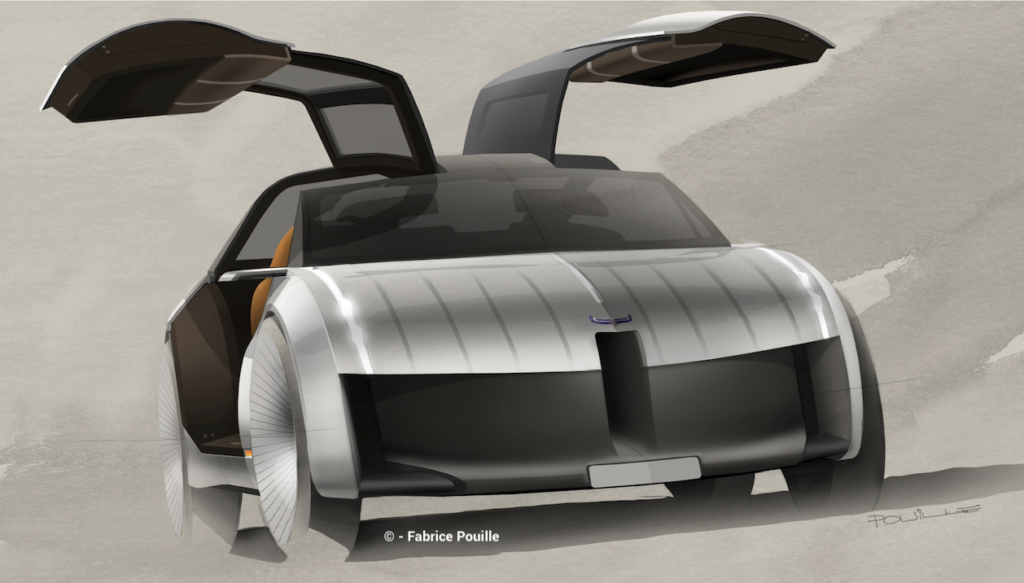
Verbatim
Frédéric Gasson
‘I was involved in the project right from the start, at our meeting during the Rétromobile show in 2020, just before the confinements! Patrick le Quément introduced me to Philipp Moch and the team met up for dinner with Christian Contzen, Patrick le Quément and Philipp Moch… and I loved the atmosphere! When Fabrice showed me the first drawings of the Renaissance, I made the first scans and we both thought that the late Florian Thiercelin* would have loved this car. For these digitisations, I started with a digitisation of the Bugatti Galibier concept car that I had worked on. The whole Renaissance Avions Voisin team really embraced the spirit of Gabriel Voisin. Since then, I’ve even bought myself a Gabriel Voisin Biscooter and I often ride it! *designer of the Renault Initiale and VelSatis concept-cars, who died a year ago.

Verbatim
Christophe Chedal-Anglay
Christophe Chedal-Anglay is a naval designer who says he has a ‘passion for design’. He met Patrick le Quément when the latter joined the Grand Large Yachting group and its Outremer Yachting and Gunboat brands. ‘After our shared experience in the naval sector, notably on the Gunboat 68 project, Patrick called me to work on the Renaissance project, not for the exterior design, but for the interior, because he had seen me work when I designed the exterior and interior of the Gunboat. On the Renaissance, I also contributed my expertise in ultra-technical naval projects, which are ultimately very similar to those of Voisin, with certain types of shape that are purely technical. My father was a craftsman and I’ve always kept an eye on ‘how things are made’, how they are born out of processes or the constraints of the material, or even the pleasure of working with the material! I have an understanding of the lightness of my job, and that fitted in perfectly with a Voisin project.’
*The Voisin brothers
In 1906, Charles and Gabriel Voisin founded the Société des Aéroplanes Voisin. Hundreds of Voisin aircraft took part in the aerial battle of the First World War, after which Gabriel, Charles having died earlier in 1912, decided to change direction and become a manufacturer of exclusive automobiles. From 1919 to 1935, Avions Voisin’s cars drew heavily on their experience as aircraft manufacturers.
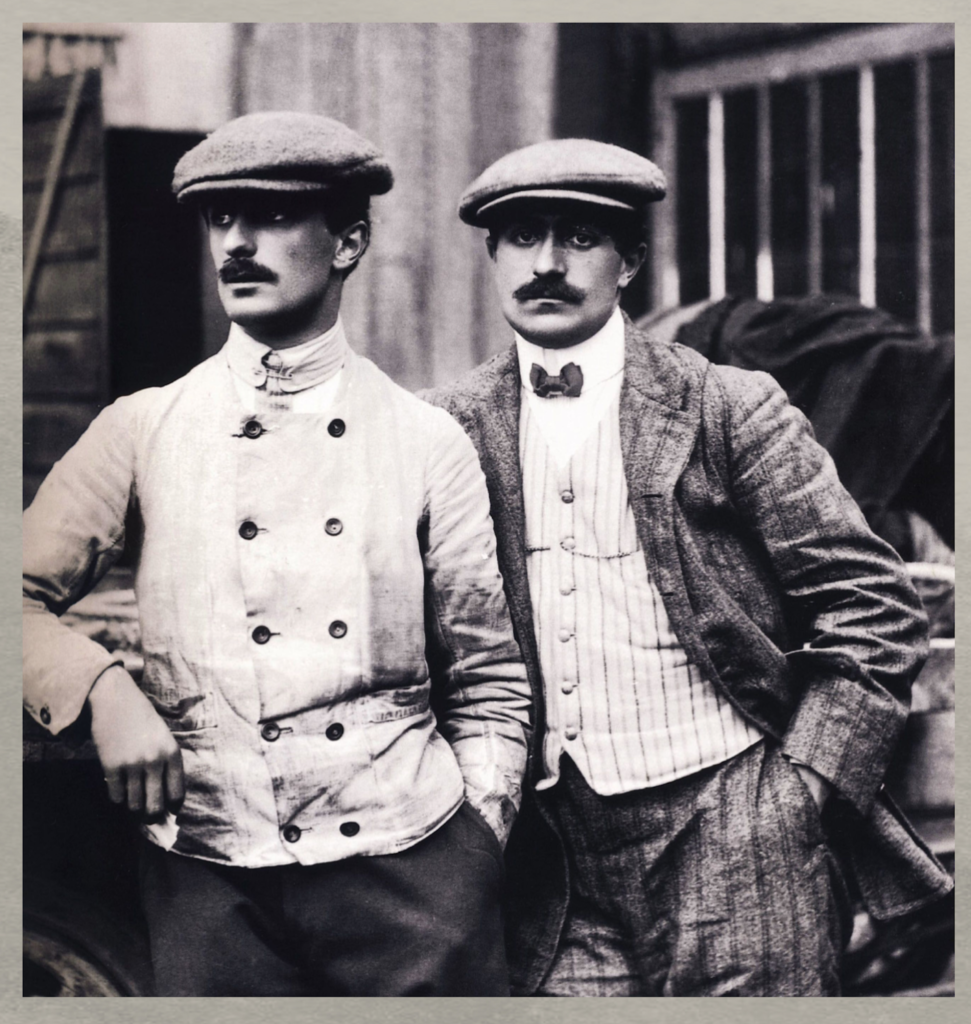
Technically sophisticated, light and aerodynamic, with a reputation for singular elegance, they were adopted by the Parisian elite. From 1916 to 1931, Gabriel had gathered around him a team of brilliant people such as André Noël, Marius Bernard and of course André Lefebvre, who was to gain worldwide renown as the father of the Citroën front-wheel drive, but also of the 2CV and the remarkable DS19. Avions Voisin ran into financial difficulties from 1935 onwards, and the company did not survive the consequences of the Second World War.
Thanks to…
Alain Giraud, Fabrice Pouille, Frédéric Gasson and Christophe Chedal-Anglay for their help in providing drawings and documents… and, of course, Patrick le Quément, for overseeing the development of this project, so that it reflects the truth at every stage. From the various interviews conducted for this project, I can see the great mutual respect shown by each member of the team, who have all become friends, even though some of them didn’t necessarily know each other at the start of the project. The project was an enriching human experience for everyone, one that went beyond the world of design! Christophe Bonnaud
